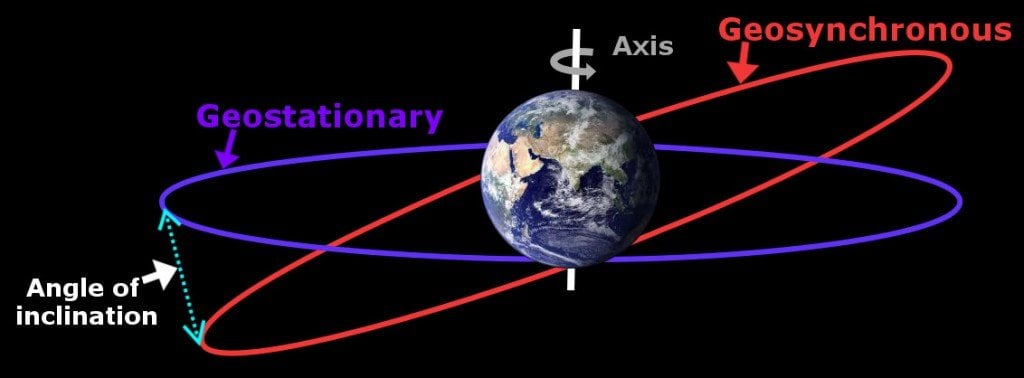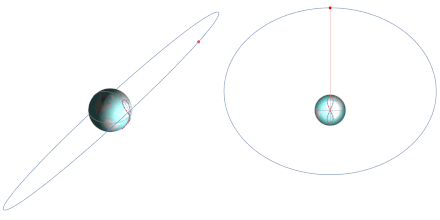A mysterious Chinese government satellite, believed to be a military-operated early warning station, successfully launched into orbit Feb. 4 on top of a Long March 3B rocket.
The three-stage, 184-foot-tall (55-meter) rocket lifted off from the Xichang space center at 1536 GMT (10:36 a.m. EST), according to the China Aerospace Science and Technology Corp., or CASC, China’s biggest state-owned aerospace contractor.
2 days ago Geostationary satellites orbit 22,236 miles above the equator at speeds equal to Earth’s rotation. This means they continuously view the same area. Because they stay above a fixed spot on the surface, they provide constant vigil to identify and track severe weather conditions. The Long March 3B pitched away from Xichang, located in Sichuan province in southwestern China, on an easterly trajectory to head for an elliptical geostationary transfer orbit. Liftoff occurred.
The Long March 3B pitched away from Xichang, located in Sichuan province in southwestern China, on an easterly trajectory to head for an elliptical geostationary transfer orbit.
Liftoff occurred at 11:36 p.m. Beijing time.
Geostationary Orbit Distance
After dropping its four hydrazine-fueled boosters, first stage, and second stage, the Long March 3B’s twin-engine cryogenic upper stage ignited two times to inject the rocket’s payload into the proper orbit for deployment. Chinese government officials said the mission achieved its “predetermined orbit” and was a “complete success.”
U.S. military tracking data indicated the payload separated from the Long March 3B rocket in an elliptical, or egg-shaped, orbit ranging between 120 miles (194 kilometers) and 22,251 miles (35,811 kilometers) in altitude, with an inclination of 28.5 degrees to the equator.
The spacecraft is expected to use an on-board propulsion system to reach a circular orbit more than 22,000 miles over the equator, where its orbital velocity will match Earth’s rotation, giving the satellite a fixed coverage area.

According to CASC, the new spacecraft — named TJS 6 — is a communication technology test satellite. The TJS 6 spacecraft will be “mainly used for satellite communications, radio and television, data transmission, and other services,” CASC said, along with conducting related technology verification tests.
But independent analysts believe the TJS 6 satellite has a military purpose, and could carry sensors designed to warn Chinese leaders of an impending missile attack. Low-resolution illustrations of the TJS 6 satellite show payloads that are similar to infrared instruments on-board U.S. military early warning satellites.
China has launched six satellites in the TJS series since 2015, and all are widely speculated to have military missions. The TJS 2, TJS 5, and TJS 6 satellites appear to be of the same type, likely with missile warning sensors.
The TJS 1 and TJS 4 satellites are theorized to have an electronic or signals intelligence-gathering mission.
Email the author.

Follow Stephen Clark on Twitter: @StephenClark1.

Geostationary Orbits
A geostationary orbit is one in which the speed at which a satellite orbits the Earth coincides with the speed that the Earth turns and at the same latitude, specifically zero, the latitude of the equator. This does not mean that the satellite and the Earth are traveling at the same speed, but rather that the satellite is traveling fast enough so that its orbit matches the Earth's rotation. A satellite orbiting in this way, therefore, appears to be hovering in the same spot in the sky and is directly over the same patch of ground at all times.
A geosynchronous orbit is one in which the satellite is synchronized with the Earth's rotation, but the orbit is tilted with respect to the plane of the equator. A satellite in this orbit will wander up and down in latitude, although it will stay over the same line of longitude. Although the terms 'geostationary' and 'geosynchronous' are sometimes used interchangeably, they are not the same technically; geostationary orbit is a subset of all possible geosynchronous orbits.
The person most widely credited with developing the concept is noted science fiction author Arthur C. Clarke. Others had earlier pointed out that bodies traveling a certain distance above the Earth on the equatorial plane would remain motionless with respect to the Earth's surface. Clarke, however, published an article in 1945's Wireless World that made the leap from the Germans' rocket research to suggest permanent man-made satellites that could serve as communication relays.
Geostationary objects in orbit must be at a certain distance above the Earth to remain in the same position relative to the Earth's surface; any closer or further away, and the object will not remain in the same position. This distance is 22,236 miles (35,786 kilometers) from the surface.

The first geosynchronous satellite was orbited in 1963, and the first geostationary one the following year. Since the only geostationary orbit for the Earth is in a plane with the equator at 22,236 miles (35,786 kilometers), there is only one circle around the world where these conditions occur. This means that geostationary 'real estate' is limited. While satellites are in no danger of bumping in to one another yet, they must be spaced around the circle so that their frequencies do not interfere with the functioning of their nearest neighbors.
